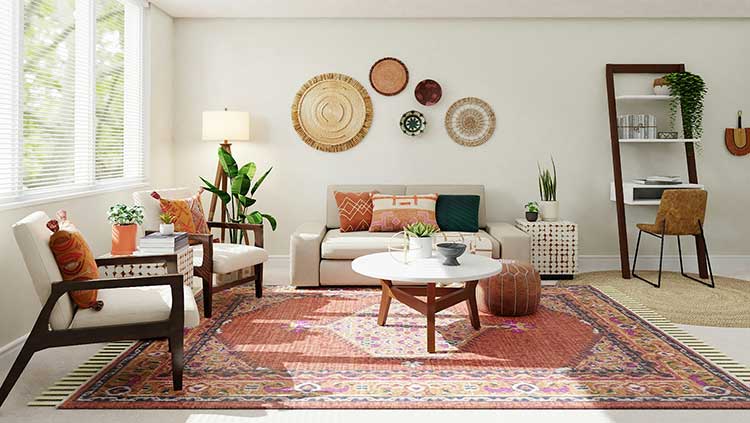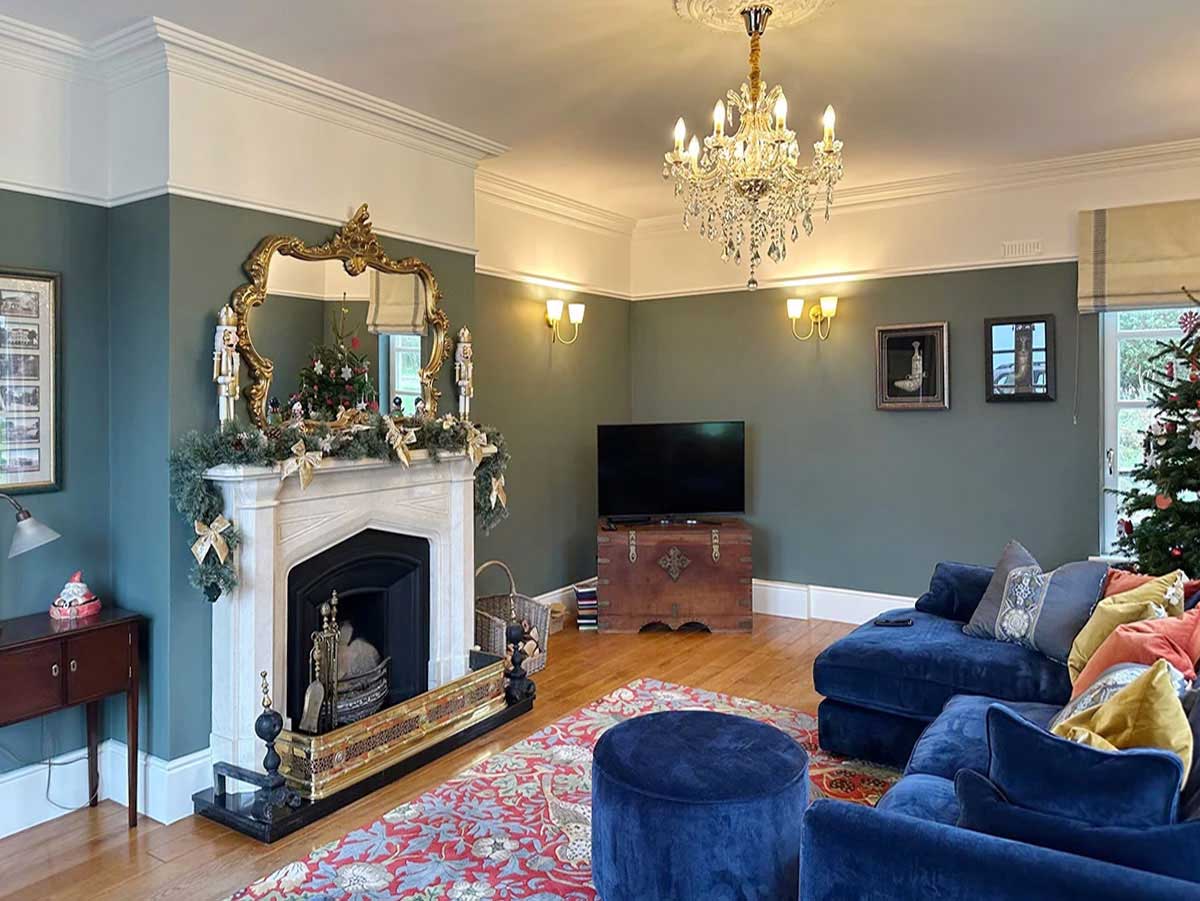Here is one of my favourite pieces of wisdom:
“Style is a concept that cannot be precisely defined, and yet, we know it when we see it.
It is little to do with fashion or trends, it is a way of life and a reflection of one’s self.”
(Rice-Carmen, Rhonda. Designers at home, Rizzoli International Publications 2012)
It’s something I read over 20 years ago, and it has stayed with me since. In fact, those words had such an impact on me, I made them the foundation of the 20-hour course I wrote and delivered in 10 two-hour modules to adults after I graduated.
The words beautifully describe how to approach interior design, and I would tell my students to keep them in mind when designing luxury spaces for themselves.
Listen to yourself, rather than others, because style is different for all of us. What appeals to one won’t appeal to someone else. Style is deeply personal. Yes, you might share similar tastes with someone else, but always remember to add your own twist, your own personality, to your design. Add the unexpected to your rooms—a thing that above all makes you happy. Something that is no-holds-barred, 100 per cent, undiluted you.
Luxury interior design starts with X
Moreover, start your room design with that thing. Don’t add it at the end. Make it’s your launch pad for the room. It’s so much easier to design a room around a thing you love than it is to start with a blank canvas.
Really, this is just another way of looking at the oft-quoted piece of interior design advice: ‘Start with a rug.’ Although, being honest, I never found rugs a useful starting point myself. Instead, I suggest you ‘Start with X’. And what X is can be entirely up to you. It could be an heirloom, it could be a piano, or a dining table that was gifted to you, or indeed an actual rug that you fell in love with on holiday and had shipped back to Ireland. What X is will be different for each and every one of us.
What if you don’t have anything in your life with X-appeal? Don’t worry and, above all, don’t force it. The things you use as the foundation for your room design have to come into your life naturally. You can’t chase after them. They sneak in through the door marked ‘Serendipity’. And that takes time.
Young couples who are buying their first home can often put themselves under a lot of pressure when it comes to the interior. A blank, empty home is a pretty scary thing, I get that. And it’s easier to fill that blank canvas when your style and preferences have matured.
The good news is that time is your friend. After a while, being exposed to new experiences, architecture and so on will help you land on your style. It’s inevitable. Take the time to indulge your curiosity and explore. Enjoy the time it takes to discover what truly appeals to you. Interior design is one of those things where the journey and the destination are equally enjoyable.
Start your luxury interior design journey
So how do you design a luxurious home without breaking the bank? Well, the easiest thing is to have a big bank. But failing that, here are five crucial steps to get you started. Don’t skip them. They are the foundation of the designs that will make you happy.
1. Know your tastes and preferences

Photo by Uby Yanes on Unsplash
Here’s another of my favourite sayings: ‘I don’t know what I like, but I know when I see it.’ Many of us start our design journeys from this point. A bit like the young couple I described above. We haven’t seen enough yet to know what we really truly love.
So one solution is to go out and take note of different styles and designs. You can do that by visiting places and spaces. But you can also do it from your sofa by taking cuttings from magazines or creating a picture album on your phone of things you see and love. If you’re really organised, you can create mood boards and scrapbooks and slides.
You can also do the opposite—especially when you are struggling to discover what you truly love. Make a list of things you don’t like. That can be just as effective a starting point on your journey. It might not move you forward as such, but a list of dislikes will tell you in which directions you don’t want to go.
2. Don’t jump to conclusions
In other words, don’t assume what you see in magazines and online is what the thing actually looks like. This means you shouldn’t assume that it will look the same in your home as it does on the (web)page.
Do your research and get organised. Find swatches and samples of fabrics, colours, textures and finishes. Don’t forget that a sample can be the actual thing itself in a showroom. You can visit it multiple times. A bit like going to a library of styles.
Speaking of which, libraries are wonderful places to look at magazines and books with design ideas and photographs of interiors from around the world.
3. Live with your samples and bring them along
If practical, you should treat your samples like a guide dog. Live with them and bring them along with you when you’re looking for guidance about the next steps to take on your design journey.
Living with your samples for a while will help you get beyond the novelty factor, so you’ll learn whether you really love them or whether they are a passing infatuation. And bringing them along when you’re looking at other design elements will help you decide whether the next step you take on your design journey is the right one.
4. Keep it consistent

Photo by Spacejoy on Unsplash
Once you land on your style, it’s important that you keep it consistent throughout the room and the house. So from the moment you walk in the door, there is similarity and flow as you go from room to room.
This can be done with as little as an echo in the patterns you use in each room, or the same pop or flash of colour in cushions, rugs and accessories.
5. Luxury has many levels
 Photo by Amin Hasani on Unsplash
Photo by Amin Hasani on Unsplash
Luxury is a subjective word. It all depends on your values and where you are in life and on your design journey. There is no right or wrong interpretation of luxury. All that matters is your interpretation.
Don’t forget that luxury is a feeling. And that feeling isn’t always associated with being expensive. It’s the opposite, in fact. If something is too expensive for your tastes, it stops being luxury and becomes excessive and over-indulgent, sometimes even ridiculously so—like toilets made of pure gold.
For some, luxury is a €300 table lamp with an additional €300 for an exquisite lamp shade they love. For others, their luxury price point might be half that (lamp shade included, thank you very much). Or twice that.
Wherever your luxury price point lies, it’s important to acknowledge it and respect it. That’s what will determine how far your budget will stretch and it’s important to be realistic.
That’s not another way of saying, ‘Go cheap’, if your budget is tight. Not at all. It’s worth investing in things that bring you joy. Joy and happiness are priceless. But if your budget is small, don’t let it pull you into a cheap mindset. If you can, it’s worth investing in that joyous thing and revising other parts of your design budget.
How?
Keep a look out for parts 2, 3 and 4 of this series: Design a Luxurious Home without Breaking the Bank.




